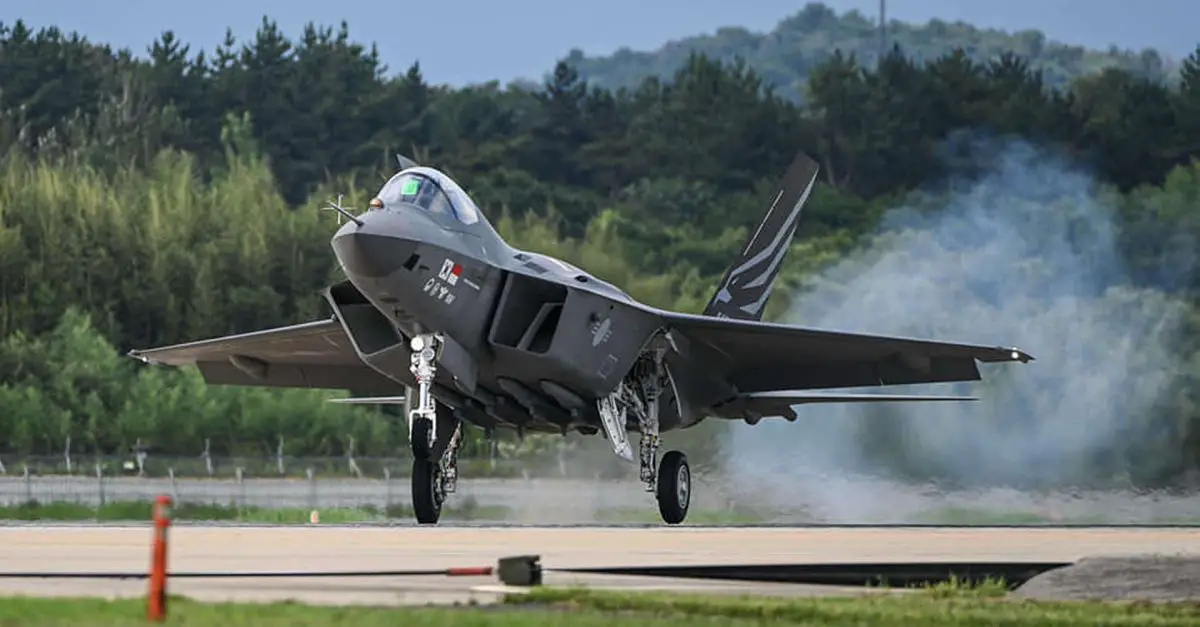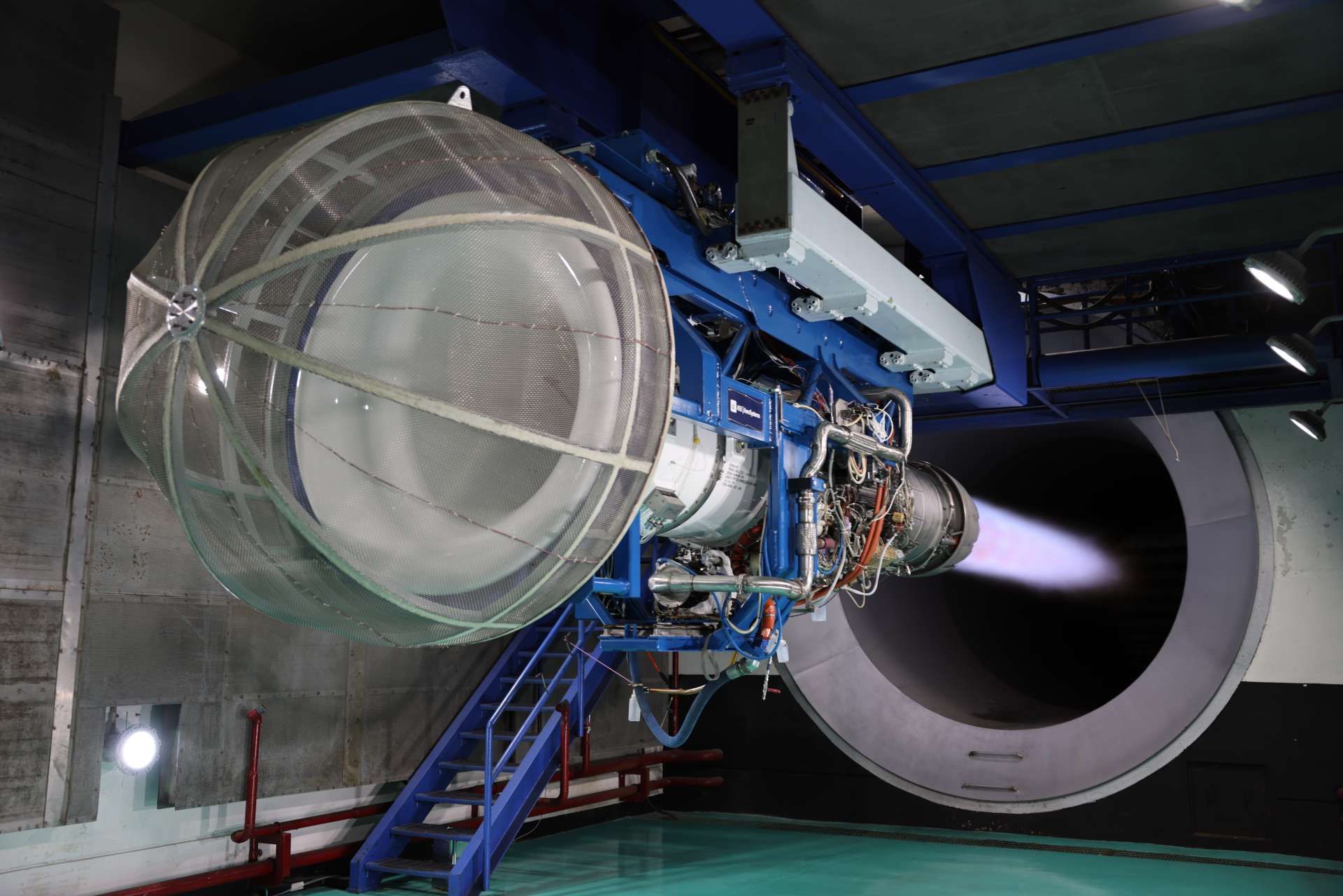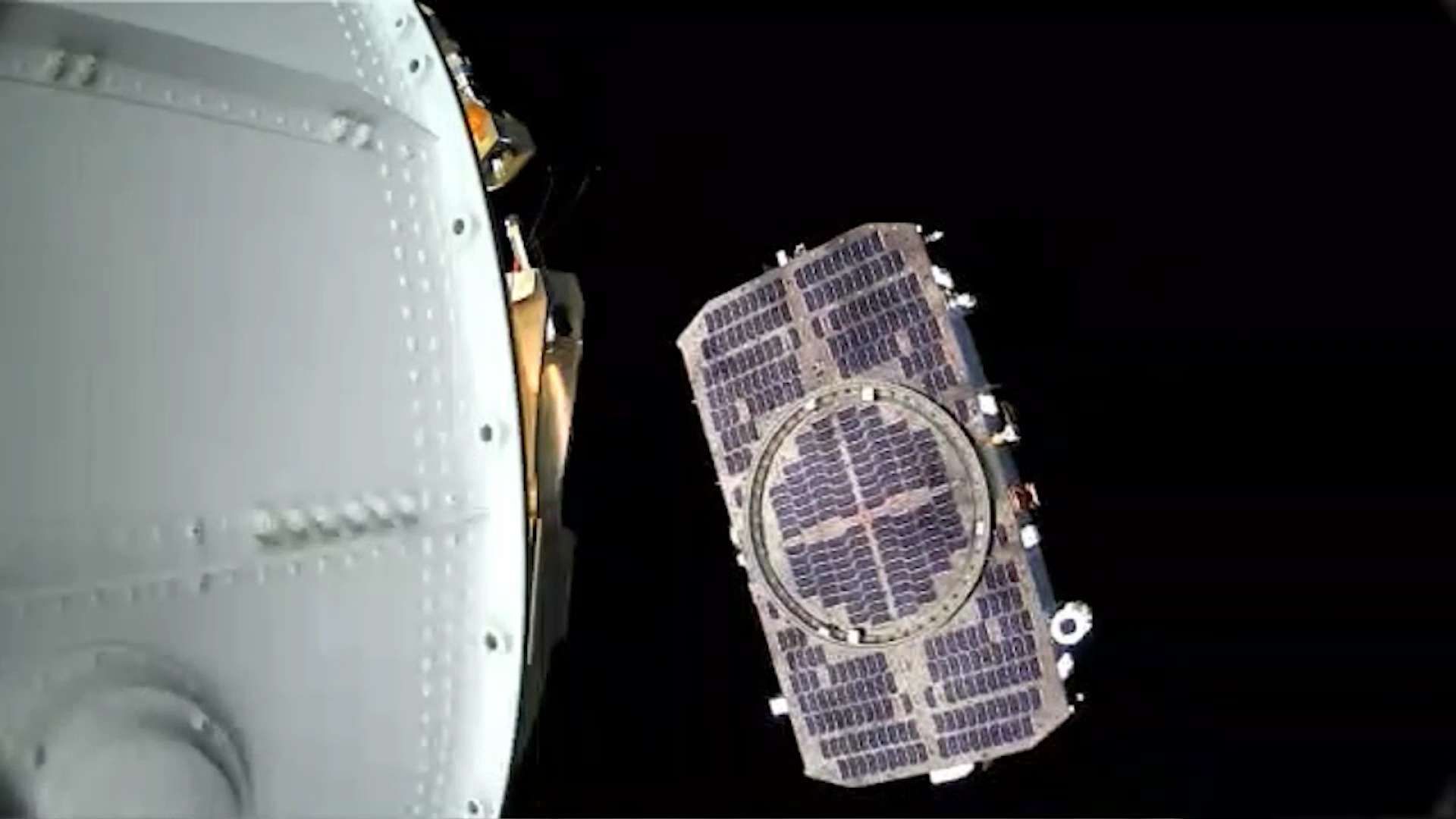Breaking News
Hanwha Aerospace to unveil KF-21 Boromae's engine in first public display at Farnborough Airshow.
Hanwha Aerospace is preparing to participate in the 2024 Farnborough International Airshow, presenting a variety of advanced aerospace solutions, including fighter jet engines, avionics, satellites, and space launch vehicles. The event, scheduled from July 22 to 26, will feature the introduction of a homegrown 15,000lb.-thrust-class turbofan engine, intended for South Korea’s KF-21 Boromae fighter jets and uncrewed combat aircraft. This marks the first public display of this Korean aviation engine, developed after years of technical collaboration with leading global engine manufacturers and comparable to General Electric’s F414.
Follow Army Recognition on Google News at this link

Powered by two turbofan engines, the KF-21 Boromae can achieve a maximum speed of 2,200 km/h (1,400 mph) and has a combat range of 1,000 km (620 mi). (Picture source: South Korean Air Force)
The development of this new 15,000lb.-thrust-class turbofan engine is part of South Korea's national defense strategy, as announced by the Defense Acquisition Program Administration (DAPA) in December 2023. Hanwha Aerospace is advancing this project and has initiated the construction of a 16,530 square meter production facility in Changwon, scheduled to be operational by 2025. This facility will also handle the licensed production of General Electric F414 engines for the KF-21, as part of a broader $3.8 billion investment by South Korea over the next decade to enhance its domestic jet engine technology.
Furthermore, on June 25, 2024, Hanwha Aerospace secured a $401 million contract with South Korea's Defense Acquisition Program Administration (DAPA) to supply engines for the new KF-21 Boramae multirole combat aircraft. Under this contract, Hanwha will deliver over 40 F414 engines, spare modules, maintenance manuals, and onsite technical support from June 2024 to December 2027. The engines will be produced under license at Hanwha's Changwon Plant 1, which also benefits from a previous agreement with GE Aerospace for local assembly and parts manufacture.
This collaboration aims to stabilize local production systems, reduce operating costs, and improve combat readiness for the Republic of Korea Air Force, while also supporting the development of infrastructure for engine testing and maintenance. Hanwha Aerospace's long-term plan includes developing a fully indigenous 15,000 lb thrust engine for future KF-21 variants.
In April 2024, Hanwha Aerospace reached a significant milestone by producing over 10,000 aero gas turbine engines. Executive Vice President Kim Won-wook, Head of the Advanced Aero Engine Business Unit, noted the company's efforts in developing an aero turbofan engine using proprietary technology, drawing on experience from the KF-21 fighter jets and the expanding defense industry in Korea.

The South Korean company Hanwha Aerospace will showcase its homegrown 15,000lb.-thrust-class turbofan engine, intended for South Korea’s KF-21 Boromae fighter jets and uncrewed combat aircraft. (Picture source: Hanwha Aerospace)
At the airshow, Hanwha Systems will exhibit advanced avionics systems, including active electronically scanned array (AESA) radars for various combat aircraft. Park Hyuk, Head of the Surveillance & Reconnaissance Business Division at Hanwha Systems, emphasized the company’s ability to provide essential components and technologies for advanced fighter jets, including engines, radars, and sensors.
In June 2024, Hanwha Systems was selected by South Korea's Agency for Defense Development (ADD) to develop AESA radars for unmanned aerial vehicles (UAVs). These radars are designed to enhance UAV capabilities by enabling detection and tracking of targets across air, land, and sea. The AESA radars facilitate the guidance of guided missiles and monitoring of enemy aircraft and are designed to be lighter and more compact due to the use of air-cooled technology and tile-type transmit-receive blocks (TRBs), which reduce the radar's volume by 50% while maintaining performance.
Hanwha Systems plans to produce AESA radars specifically for the KF-21 fighter jets, with production set for this year. These radars are expected to provide advanced capabilities, including simultaneous engagement of multiple targets in various environments. The company aims to expand its radar portfolio to include various aircraft models and seeks to export AESA radars to regions including Europe, the Asia-Pacific, the Middle East, and Central and South America.

Developed with the Korea Aerospace Research Institute (KARI), the KSLV-II space launch vehicle, also known as Nuri, successfully completed its third launch in May 2023, carrying commercial payloads to space for the first time. (Picture source: Hanwha Aerospace)
Hanwha Aerospace will also highlight its advanced space technologies at the airshow, emphasizing its role in South Korea’s space launch efforts. A mock-up of the KSLV-II space launch vehicle, also known as Nuri, will be displayed. This three-stage launch vehicle, capable of carrying a 1.5-ton payload to sun-synchronous orbit (SSO), is part of Hanwha Aerospace's responsibilities as the systems integrator for future launch missions through 2027. Additionally, the SpaceEye-T, developed by Satrec-I, a subsidiary of Hanwha Aerospace, will be showcased. This commercial earth observation satellite has a super resolution of 0.3m imagery capabilities, allowing it to identify vehicle types from space.
The KSLV-II, South Korea's second-generation space launch vehicle, represents a major advancement in the country’s space capabilities. Developed with the Korea Aerospace Research Institute (KARI), it successfully completed its third launch in May 2023, carrying commercial payloads to space for the first time. Hanwha Aerospace played a crucial role in the supply and integration of the rocket's components, including its liquid-propellant engines. Future developments aim to enhance the payload capacity and efficiency of the next-generation KSLV-III, incorporating advanced clustering technology and reusable rocket features.

Hanwha Systems’ small synthetic aperture radar (SAR) satellite, operational since December 2023, will also be featured. This satellite enhances space-based surveillance and reconnaissance capabilities with high-resolution imaging that operates regardless of weather conditions. (Picture source: Hanwha Systems)
Hanwha Systems’ small synthetic aperture radar (SAR) satellite, operational since December 2023, will also be featured. This satellite enhances space-based surveillance and reconnaissance capabilities with high-resolution imaging that operates regardless of weather conditions, making it a valuable tool for earth observation and monitoring.
Founded in 1977, Hanwha Aerospace provides a wide range of products and services, including land combat systems, precision munitions, and military engine production and maintenance, repair, and overhaul (MRO) services. The company has developed over 1,800 indigenous engines for precision-guided missiles and auxiliary power units and has provided MRO services on 5,600 military engines over 45 years. Hanwha Aerospace collaborates with major aircraft engine companies such as General Electric, Pratt & Whitney, and Rolls-Royce, and is known for its production and delivery of sophisticated engine parts.
Hanwha Systems operates in various sectors, including avionics, space, security, safety solutions, and information systems services, with a focus on prioritizing customer value through its Defense and ICT Divisions.


























